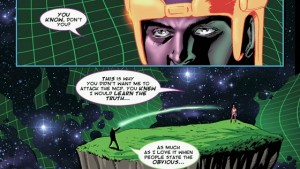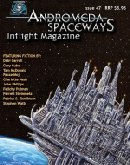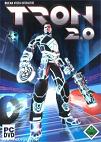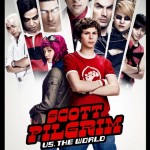Other Tron-related media
 Even after watching the original Tron movie, and playing the Tron 2.0 game, you’re still not satisfied and you just want more and more?
Even after watching the original Tron movie, and playing the Tron 2.0 game, you’re still not satisfied and you just want more and more?
 Even after watching the original Tron movie, and playing the Tron 2.0 game, you’re still not satisfied and you just want more and more?
Even after watching the original Tron movie, and playing the Tron 2.0 game, you’re still not satisfied and you just want more and more?
 This was the first issue I’ve read of Andromeda Spaceways Inflight Magazine (ASIM) that I ever read, and I was very pleased with what I read. Pleased enough that I asked for an ASIM subscription for Christmas. Not only were my favorite stories from this issue extremely good, I liked almost all of them, and I don’t say that about many magazines. I’m letting my subscription on another magazine lap because I simply like too few of the stories, and the few stories I do like, are just not that good. This issue was so much better I am happy to send my money ASIM’s way.
This was the first issue I’ve read of Andromeda Spaceways Inflight Magazine (ASIM) that I ever read, and I was very pleased with what I read. Pleased enough that I asked for an ASIM subscription for Christmas. Not only were my favorite stories from this issue extremely good, I liked almost all of them, and I don’t say that about many magazines. I’m letting my subscription on another magazine lap because I simply like too few of the stories, and the few stories I do like, are just not that good. This issue was so much better I am happy to send my money ASIM’s way.
 In 2003, twenty-one years after the release of the Tron movie, Buena Vista Entertainment released a sequel. It’s not a movie–it’s a game, a first person shooter (FPS) to be exact). The game somehow seems to have slipped under many gamers’ radars. I hadn’t come across it until five years after its release. Fans of the original movie will enjoy the digital world setting, reminiscent of the original in many ways yet also new and shiny, like 20 years of system upgrades in one fell swoop, and there are plenty of nods to the original for the dedicated fan to catch. But playing the game does not require familiarity with the original movie, so it could draw in new fans of the Tron universe, just in time for the long-awaited of the Tron movie sequel due out next month: Tron Legacy.
In 2003, twenty-one years after the release of the Tron movie, Buena Vista Entertainment released a sequel. It’s not a movie–it’s a game, a first person shooter (FPS) to be exact). The game somehow seems to have slipped under many gamers’ radars. I hadn’t come across it until five years after its release. Fans of the original movie will enjoy the digital world setting, reminiscent of the original in many ways yet also new and shiny, like 20 years of system upgrades in one fell swoop, and there are plenty of nods to the original for the dedicated fan to catch. But playing the game does not require familiarity with the original movie, so it could draw in new fans of the Tron universe, just in time for the long-awaited of the Tron movie sequel due out next month: Tron Legacy.
 Tron was written and directed by Steven Lisberger and was one of the first major studio movies to make extensive use of computer graphics. The graphics are quite dated by now, of course, but when you watch it just keep in mind that these special effects were amazing in 1982. The previews for Tron Legacy, of course, have updated computer graphics, loads of shiny goodness.
Tron was written and directed by Steven Lisberger and was one of the first major studio movies to make extensive use of computer graphics. The graphics are quite dated by now, of course, but when you watch it just keep in mind that these special effects were amazing in 1982. The previews for Tron Legacy, of course, have updated computer graphics, loads of shiny goodness.
Critiquing is a skill which is just as much based on social interaction as it is with prose examination. I’ve read critiquing advice elsewhere, which includes such statements as “don’t critique the critiquer” and “don’t rewrite the story for the author”, but here I have categorized and prioritized critiquing advice into larger categories, and split it between “how to critique” and “how to be critiqued”, as well as a couple of general statements. I list them as rules here, but of course no one will be enforcing them but yourself. You can think of them as guidelines, if you like, but I do think that your critiquing will be more happy and productive, both for giving and receiving critiques, if you follow these guidelines.
 Scott Pilgrim Vs. The World may be one of the strangest movies I’ve ever seen. It’s based on a comic book which I’ve never read (though I now intend to). Whether you like it or not depends almost entirely on whether you like your movies with a heavy dose of weird. For me, I like when a director dares to stray from Hollywood formulas and actually has the guts to try something different, even if the results aren’t spectacular. In this case, the results ARE spectacular, at least to my tastes. It’s a movie that will probably get love or hate reactions depending on if it hits your sense of humor.
Scott Pilgrim Vs. The World may be one of the strangest movies I’ve ever seen. It’s based on a comic book which I’ve never read (though I now intend to). Whether you like it or not depends almost entirely on whether you like your movies with a heavy dose of weird. For me, I like when a director dares to stray from Hollywood formulas and actually has the guts to try something different, even if the results aren’t spectacular. In this case, the results ARE spectacular, at least to my tastes. It’s a movie that will probably get love or hate reactions depending on if it hits your sense of humor.
written by David Steffen Two weeks ago we posted the article How to Write a Rejection Slip by Christopher Miller, which sparked quite a bit of interesting discussions here, on Facebook, and on blog sites that linked to us. Some agreed, some didn’t, and a good time was had by all talking about what we … Continue reading Another Perspective on How to Write a Rejection Slip
Emulating film in writing is an easy trap to fall into. Overly long descriptions of complex settings and impartial narration as though attempting to show what a camera would see. But to write fiction in this manner is to sell yourself short. No one can portray a story in a film-like manner as well as film itself can. I’m not saying you can’t tell about the same story, the same characters, the same events. But you need to tell it differently to reach its full potential.